The World Cup season is now over, and it’s time to usher in the week of the IPL. As the dust settles over a glitzy 2 months of cricketing extravaganza (and for England, India and the home team a few more months than that), it’s time to take a step back and muse over the eventful period of cricket just gone by. Little things are sometimes lost in big moments, but the full implications hit us in due course of time. This World Cup, as has been the tradition with all its ancestral editions, saw the swansong tournament of a few towering legends of the sport.This World Cup – which in my opinion, marked the evolution of the modern game – also compels us to bid adieu to its share of great men.
#1 Michael Clarke
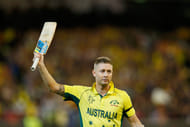
The post World Cup final presentation speech of the Australian captain began with a gracious praise for New Zealand skipper Brendon Mccullum and his team. In the event of the emotional roller-coaster this marathon four months had been for him, acknowledgement of the vanquished team could very well have skipped his mind.
But such is the character of one of the nicest men to have played the sport, and the owner of a truly generous heart. For 25 World Cup games over three editions, he has the fourth highest batting average of 63.42. While the 2007 edition in the Caribbean was a fairly easy ride – part of the all-conquering Aussie side, the 2011 one was comparatively rougher, eliminated in the quarter finals by hosts India.
Post 2011, when Clarke took over the captaincy reigns of the Aussie side, there were no Warne, McGrath or Gilchrist in the squad. It was a much more difficult road, than what his predecessors Ricky Ponting and Steve Waugh had to face. With time and after weathering much storm he managed to lift the side back to its usual position at the top, or in close vicinity. Probably it all came a complete circle in the limited overs format, with the World Cup glory last week. It’s not for nothing; one supposes that Sachin Tendulkar rated Clarke as the best Australian captain he had faced.
The man began with fairy-tale International debuts both home and away. The “Pup” with his swashbuckling stroke-making has no doubt graduated into a composed and matured batsman and captain, over the years. A steady hand in the middle order and a fearless leader, Michael Clarke however can be marked for a few more reasons than just that.
November of last year saw the demise of his dear mate and “brother” Phil Hughes, and the way Clarke comforted the family of his ex-teammate was there for the entire world to see. Not a day has gone by he says, since that day that he hasn’t thought about him. The black arm-band over his jersey had P.H written over it, and on the pivotal moment of winning the Cup he declared to the world how the Australian team had played with 15 plus one member.
Clarke began the post-match media conference by saying that he didn’t believe there were any fairy tales in cricket, but you’ve got to be kidding me if you say that his own swansong was anything but that!
#2 Brendan Taylor
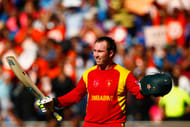
Here is a heart-breaking story about a great character. Despite being extremely talented, he hardly ever got the recognition he deserved on account of hailing from a minnow nation. Around 2004 when white players staged their walkout, Brendan had just crossed the threshold of high school, but was given an early rope into International Cricket. The likes of the Flower brothers, Heath Streak, Henry Olonga etc had made the team a fairly respectable one in the cricketing map, but from 2005 both the country’s economy as well as their cricket plummeted to the dregs. The problems persisted year after year, and each time Taylor had a chance to leave and establish a career elsewhere as many of his fellow countrymen, but he choose to stay loyal to Zimbabwe and performed his heart out despite hardly ever gaining team success.
The administrative problems culminated with a self-imposed exile from Test cricket for Zimbabwe, which ended by 2011 and that’s when he was handed the captaincy. He led his team to a successful Test comeback later that year, in which he also scored his maiden century, and to a win over Pakistan a month later. For over a decade he’s been the lynchpin of Zimbabwe batting, with 23 Tests, 167 ODI’s and 5120 ODI runs at an average of 34. But at last the weight of time seems to have caught up with him, and with a young family to provide for he signed a Kolpak county deal with English club side Nottinghamshire, which would make him unable to play for his country. Right till the end he remained the valiant and tragic hero that earmarked his character, emerging as the fourth highest run getter in the tournament with 433, and a final innings of 138 (110) against India. All of this, with the familiar lack of team success.
For the man who would be compared in the same breath with the Andy Flowers and Heath Streaks but for the team around him, the prospect of leaving it was breaking his heart:“It's been one of the biggest decisions I've had to make; in fact the biggest decision... I'm very, very sad to leave Zimbabwe cricket. I've had some fond memories and I have some great friends here but life goes on and you have to try and make the best decisions for your family moving forward.”Accolades poured in, with the end of his final match, and among others Shikhar Dhawan, Virat Kohli and Suresh Raina came up to congratulate him as he left the field for one final time, in Zimbabwe colours.
#3 Daniel Vettori
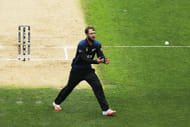
After making his ODI debut in 1997 at the age of 18, Vettori went on to become the most capped Kiwi player. Over the years, he emerged as New Zealand's leading wicket-taker in ODIs with 305 scalps. The youngest man to play Test cricket for New Zealand, Vettori in his 113 Test appearances, claimed 362 wickets and is only the third cricketer after Kapil Dev and Ian Botham to take more than 300 wickets and score 4,000 runs. A part of 5 World Cup campaigns, Vettori watched his side reach the semi-finals in 3 editions, before finally making it to the finals in the just concluded one. The final appearance was almost not materialising with the late flurry of injuries that made him go into a semi-retirement mode for almost 2 years, before coming back to play his final Test last November.
He had saved himself to be able to make the most impact in one last World Cup with the Black Caps jersey. He certainly didn’t disappoint his captain, bowling crucial spells throughout the tournament with 15 wickets over 8 games with an economy of just 4.04. And who can forget the spectacular catch at third man to dismiss Marlon Samuels, in the quarterfinal!
Not surprising therefore was his skipper Brendon Mccullum’s admiration for his teammate: “Marvelled at his career. He's a tremendous ambassador for the game of New Zealand and also worldwide. He's given over half his life to this game.” He also thought Vettori’s contribution to the latest campaign was immense and put it down as testament to the man’s commitment.
#4 Mahela Jayawardene
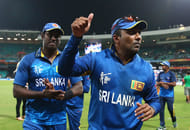
Here is one player in International cricket, who will be remembered for his great match saving innings. Mahela Jayawardene steered the Sri Lankan ship for the majority of the last decade and a half. The right-hand batsman batted 418 innings and made 12650 runs with a strike rate of 78.96. His quality batting never came in doubt throughout his international career.
Mahela crossed 10,000 runs mark in both ODI and Test format. His placement was superb and he wasn’t a power hitter, most of his runs came from the classy act and playing near the ground. Colombo born cricket, grew up as a fine captain in the latter half of his career and also took Sri Lankan team to the 2007 World Cup final.
He was brilliant in home conditions and it was always difficult for the bowlers to get him there. His continuous learning of the game made his batting more elegant with time. He was unbeaten in the 2011 World Cup final against India where he scored 103 of just 88 balls. But his last quadrennial event eventually ended on a sad note where he could only score 125 runs in the 7 matches he played.
#5 Kumar Sangakara
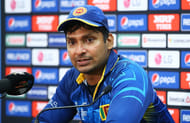
Probably the most gifted athlete to have ever graced a cricket field, this man not winning a World Cup is probably going to remain as one of the most gaping aberrations in the sport. Kumar Sangakara is the second highest leading run scorer after Sachin Tendulkar in One Day International (ODI) cricket. He scored 14234 runs from the 380 innings he batted with an average of almost 42. The left-hand batsman has 25 centuries and 93 half-centuries to his name in ODIs.
The 37-year-old made a new World record after scoring back to back four centuries in the recently concluded World Cup. He announced it before quadrennial event that he wanted to end on a high by winning the cup for his nation. But sadly Sri Lanka’s march was halted by the Proteas in the knock-out round match itself which deprived him from retiring on a high note.
At the age of 22, he broke into the Sri Lankan side and matured steadily with the time and became one of the destructive run making machine for the Lankans. With the gloves in hand an extraordinary keeper, a brilliant out and close-in fielder and a riveting batsman, Sangakara shares a record of 624 runs partnership with his compatriot Mahela Jayawardene in test cricket. Just like Mahela, even he captained Sri Lanka to World Cup final (2011) before losing to India in the subcontinent.
The wicket-keeper batsman will be playing his last international contest (Test) in the latter half of this year against the Indians.
Brand-new app in a brand-new avatar! Download CricRocket for fast cricket scores, rocket flicks, super notifications and much more! 🚀☄️
